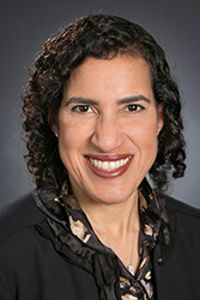In September, Black employees at the agency raised concerns about a racist working environment and called for more diversity at the agency, in a letter obtained by Politico this week.
In a statement announcing the appointment, Newsom said Randolph is a “bold, innovative” leader who will “lead in our fight against climate change with equity and all California’s communities at heart.”
Randolph said in an emailed statement that she is “beyond excited and honored” to be selected to lead an agency that “has been at the forefront of environmental progress for decades.”
“Governor Newsom and the Legislature have set California on a bold path to address the air pollution that burdens our communities and the existential threat of climate change,” she said. “Implementing these policies requires effective management and strategy that centers the people most affected by environmental damage.”
For weeks the chatter at the agency and between environmentalists was that Newsom would pick either board member Hector de la Torre, a former assemblyman from Los Angeles and a close ally of Nichols, or Martha Guzman Aceves, another commissioner at the CPUC and the preferred choice of many of the state’s environmental justice groups.
In an interview before Newsom’s announcement, Miya Yoshitani, executive director of the Asian Pacific Environmental Network, said Guzman Aceves would be “an excellent choice.”
The selection of a lower profile, nuts-and-bolts administrator to lead the agency could mean that Newsom wants to avoid an ideological fight, as well as deciding to center climate policy-making within Cal EPA and his administration. Under Nichols’ leadership, CARB operated as a powerful, almost independent entity.
With the naming of Nichols’ successor, Newsom has a chance to put his stamp on the state’s climate policies and possibly shift away from the reliance on market-based solutions preferred by Nichols and former Govs. Jerry Brown and Arnold Schwarzenegger.
California’s 2017 climate plan designates cap-and-trade as responsible for almost half of the reductions required to achieve the state’s 2030 climate target, making it the single largest driver of planned climate policy outcomes.
But after the cap-and-trade auction generated severely reduced revenue in May, Newsom and Jared Blumenfeld, California’s secretary for environmental protection, penned a joint letter to Senate leaders acknowledging the need to “revisit the program design” and examine how well the policy works.
“Achieving clarity around the operating assumptions and the relative weight given to our cap-and-trade program is essential,” they wrote.
California’s emissions of greenhouse gas declined about 5% in the five years after the program began in 2013, but a significant portion of the reductions likely stem from the state requiring utilities to buy more power produced from solar, wind and other renewables.
Cap-and-trade auctions have generated billions of dollars to fund programs that are meant to further reduce greenhouse gas emissions.
The selection of Randolph was quickly praised by a coalition of grassroots environmental justice groups, as well as the president of the Environmental Defense Fund, Fred Krupp, who called her “an excellent choice.”
Gladys Limón, executive director of the California Environmental Justice Alliance, described Randolph in a statement as a “thoughtful leader” with “vast knowledge and experience.”
“As an alliance of EJ organizations working to improve the environmental health of communities with the worst air quality in the state, we hope Randolph prioritizes equity in her leadership and look forward to working with her,” she said.
Limón’s group was one of more than 70 who co-signed a letter to Joe Biden’s transition team last week asking the incoming president to avoid picking Nichols as head of the Environmental Protection Agency, in part because of her support for cap-and-trade.
The governor thanked Nichols for her “extraordinary tenure” as the state’s top air regulator.
